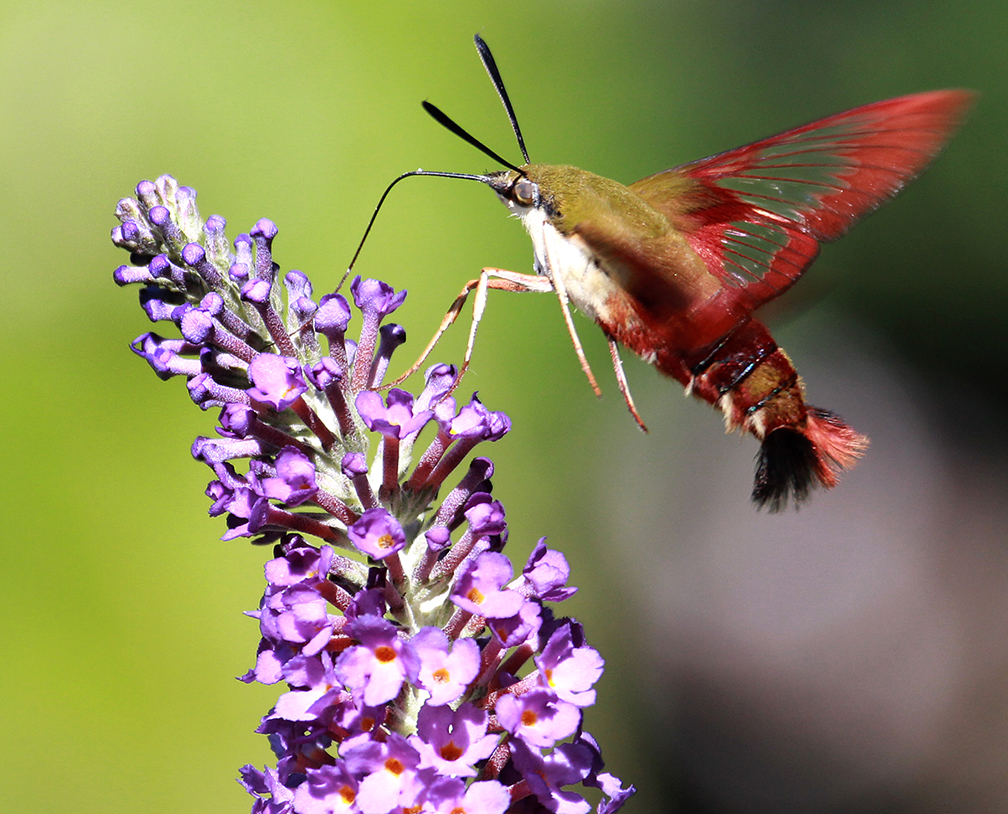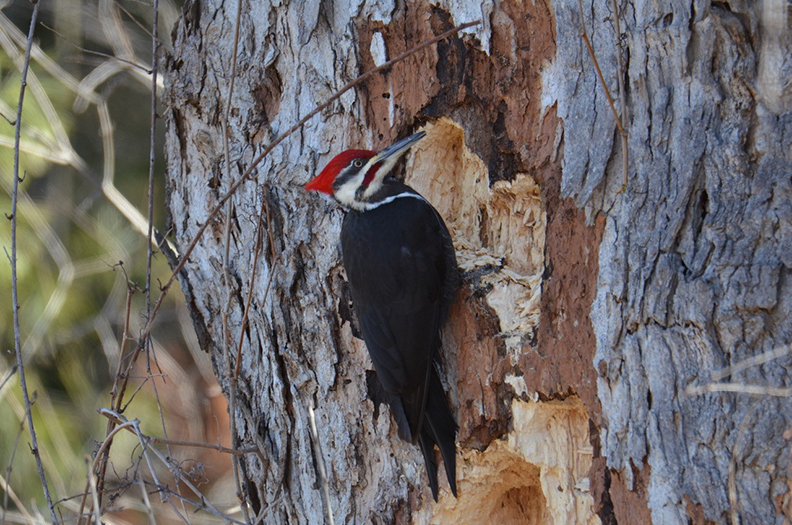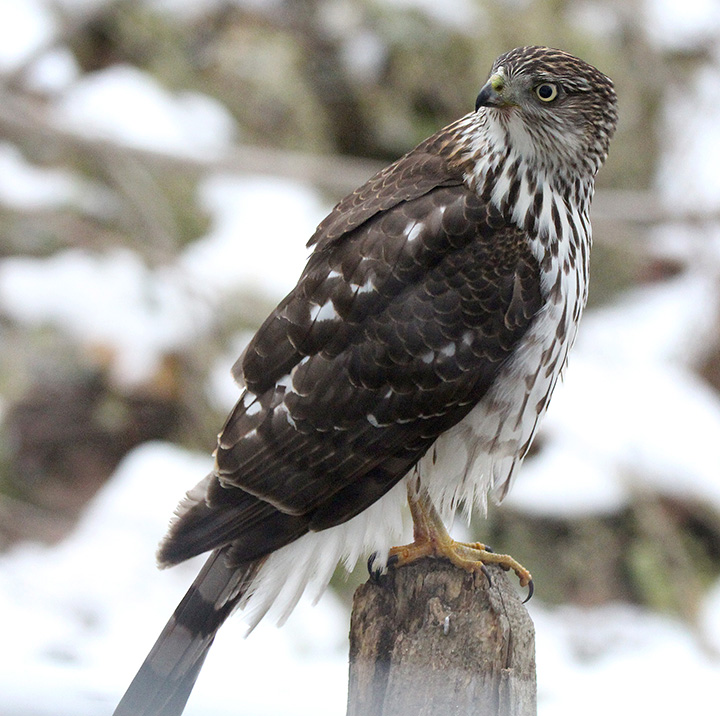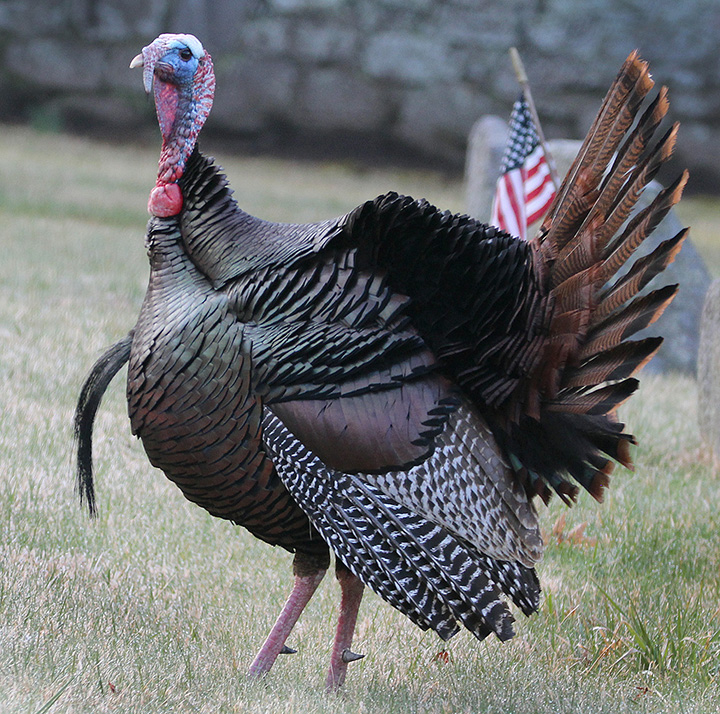Odds And Ends From The Natural World

PHOTO: A clearwing hummingbird moth visits a butterfly bush in New England. Chris Bosak Photo

by Chris Bosak
Weirs Times Columnist
I led you astray in a recent column and I’m here to own up to it and make it right.
I wrote about and included a photograph of a tomato hornworm caterpillar being covered in the small white cocoons of a wasp parasite. That part was true. It was a tomato hornworm and it was covered in the cocoons of braconid wasps. These wasps start their life cycle as an egg laid inside the giant green caterpillar and eat their way out to build their cocoons.
I was mistaken, however, in saying that the caterpillar would have turned into a hummingbird moth – at least the kind we enjoy watching around our flowers in the summer and early fall. That moth is the hummingbird clearwing moth and is not what the tomato hornworm caterpillar turns into. The tomato hornworm caterpillar turns into a much less colorful five-spotted hawk moth, or five-spotted sphynx moth.
The caterpillar of the clearwing hummingbird moth is indeed a hornworm, but not the tomato hornworm. It is a large, green caterpillar with a “horn” on the back end, but it is different from the one I spotted in my garden the other day. It also does not decimate garden plants like the tomato hornworm or the similar-looking tobacco hornworm.
Apparently, it is a fairly common mistake and I’m sorry that I have perpetuated the confusion. There are several hornworm caterpillars that turn into a variety of large sphynx moths. It still doesn’t make the story any less gruesome to have the larva of a wasp eat through the inside of a caterpillar, but I wanted to set the record straight.
It’s not often that birds make national news and, very often, it’s not a good thing when they do. Such was the case last week when the New York Times, BBC and most of the major networks reported on the mass die-off of birds in New Mexico and other parts of the Southwest. Birdwatchers on their walks reported finding hundreds of dead or disoriented birds. Based on these observations and reports, scientists estimate the die-off to be in the hundreds of thousands.
Why is this happening? Scientists still do not know for sure. A severe cold snap (remember the snow that fell in that region a few weeks ago?) and smoke from the California wildfires are the popular theories. The die-off in New Mexico, however, actually started before the cold snap and the wildfires, so there is still doubt. Scientists say autopsy reports are needed before they can make a clearer determination.
I hope they do figure out the root cause of this concerning die-off so we can take actions to prevent it from happening again. Let’s also hope it doesn’t continue or spread to our region.
To end on a brighter note, the fall migration is in full swing in New England. I’ve seen many warblers in my backyard recently and the hawk-watch sites are reporting impressive numbers of birds of prey. Get out there and enjoy the New England fall and the birds that pass through our region. As always, let me know what you are seeing out there.
Chris Bosak may be reached at chrisbosak26@gmail.com or through his website www.birdsofnewengland.com



